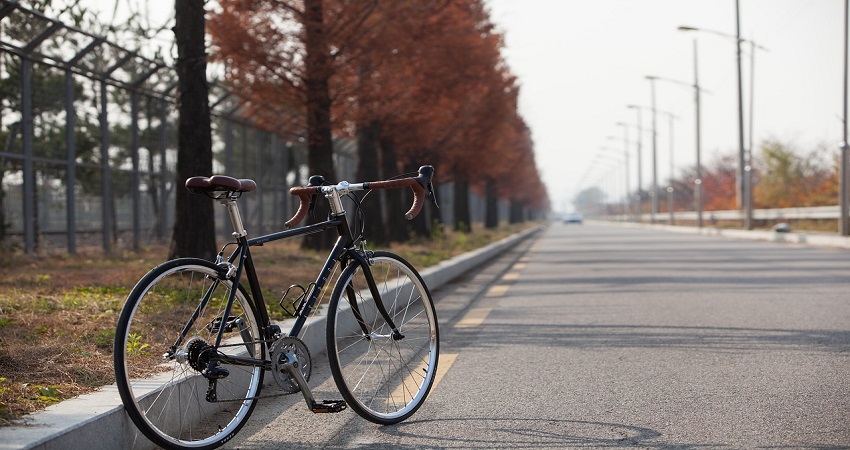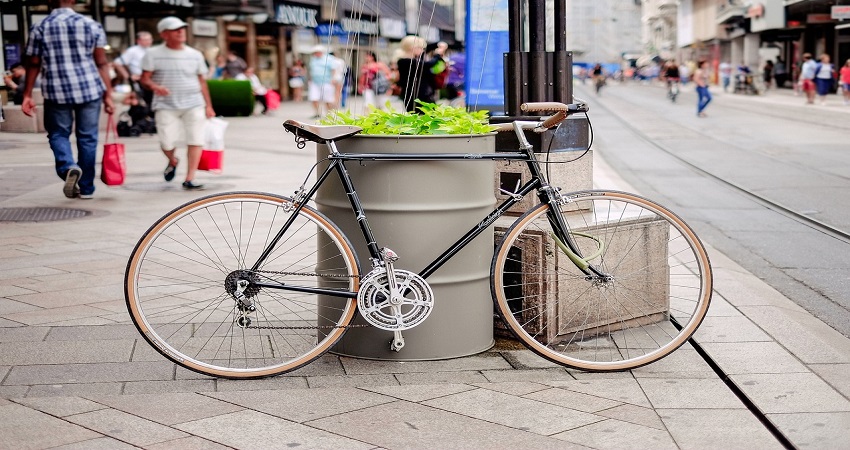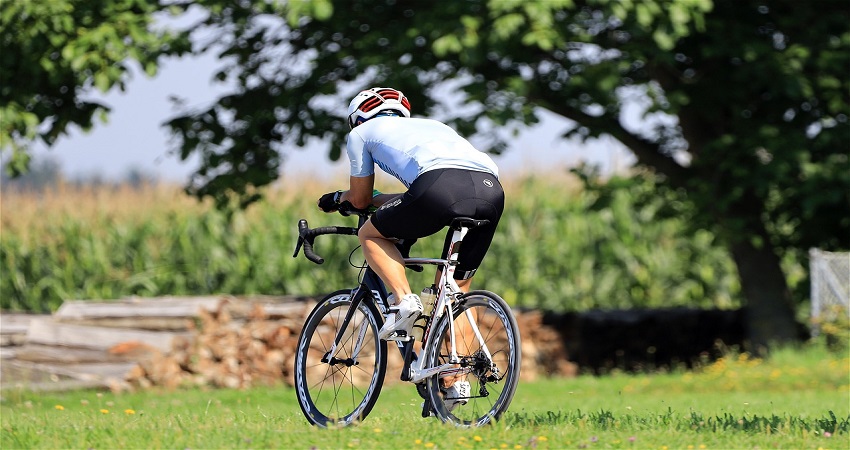Yes, road bike pedals are not universal as there are different types such as clipless, platform, and others, each requiring specific compatibility. Road bike pedals come in varied types, including clipless, platform, and hybrid pedals.
To ensure proper functionality and safety, it’s essential to choose the right pedal type compatible with your specific cycling shoes and bike. While clipless pedals require matching cleats on the shoes, platform pedals work with any type of footwear, providing flexibility but may sacrifice some pedaling efficiency.
Understanding the distinctions among road bike pedal types is crucial to selecting the most suitable option for your cycling needs. In the following sections, we will delve into the categorization of road bike pedals, the advantages and drawbacks of each type, and the compatibility considerations for different cycling activities.
Types Of Bike Pedals
When it comes to bike pedals, there are various types designed to cater to different riding styles and preferences. Understanding the differences between these pedal types will help you choose the right one for your road bike.
Clipless Pedals
Clipless pedals are a popular choice among road cyclists for their efficiency and power transfer. Unlike the name suggests, they actually clip into special cycling shoes equipped with cleats. The mechanism allows for a secure connection between the foot and pedal, enabling riders to pull up on the pedals during challenging climbs, improving overall performance.
Flat Pedals
Flat pedals are commonly used on mountain bikes, but they are also a viable option for road cycling. These pedals provide a large, flat platform for the foot, offering stability and freedom of movement. While they may not offer the same pedaling efficiency as clipless pedals, some riders prefer the simplicity and ease of use that flat pedals provide.
Strap Pedals
Strap pedals feature a toe cage and adjustable straps that secure the foot onto the pedals. They offer a middle ground between flat and clipless pedals, providing some degree of foot retention while allowing for quick and easy foot placement and removal. Strap pedals are a good option for riders who want a bit of extra security without fully committing to clipless pedals.
Compatibility Considerations
Road bike pedals are not universal, as there are different types such as clipless pedals and flat pedals. While road cyclists tend to use clipless pedals for improved efficiency, using flat pedals on a road bike is also possible. Consider your preference and cycling style when choosing the right pedals for your road bike.
When it comes to road bike pedals, one question often asked is whether they are universal. Can any pedals fit any bike? The answer is not as straightforward as one might think. There are a few factors that can affect pedal compatibility, and it’s important to consider these before making a purchase decision.
Can Any Pedals Fit Any Bike?
The short answer is no, not all pedals can fit all bikes. Different types of bikes, such as road bikes, mountain bikes, and hybrid bikes, have different pedal requirements. Road bike pedals, for example, are typically designed for use with a cleat system, which allows riders to clip into the pedal for increased efficiency and power transfer. On the other hand, mountain bike pedals are often flat or platform pedals that provide a larger surface area for riders to grip with their shoes.
While it may be possible to use flat pedals on a road bike or clipless pedals on a mountain bike, it’s important to consider the intended use and performance goals of your bike. Flat pedals on a road bike may not provide the same level of efficiency, while clipless pedals on a mountain bike may not offer the same level of grip on rough terrain.
Factors Affecting Pedal Compatibility
There are several factors that can affect pedal compatibility with a bike. These include:
- Type of Pedal System: Pedal systems come in various designs, including SPD, Look, Speedplay, and more. It’s important to ensure that your bike’s pedals are compatible with the type of pedal system you plan to use.
- Thread Size: Pedals have different thread sizes, so it’s important to check that the thread size of your bike’s crank matches the thread size of the pedals you want to use. This information is often indicated in the product specifications.
- Cleat Compatibility: If you plan to use clipless pedals, you’ll need to consider the compatibility of your bike’s shoes with the pedal’s cleat system. Different cleat systems have different bolt patterns and positioning, and not all shoes are compatible with all types of cleats.
- Pedal Clearance: Pedals come in various profiles, and it’s crucial to ensure that the pedals you choose have enough clearance from the ground, especially if you ride on uneven terrain or encounter obstacles.
Before purchasing new pedals for your road bike, it’s always a good idea to consult with a knowledgeable bike shop or do some research online to ensure compatibility. Taking these compatibility considerations into account will help ensure that you choose the right pedals that fit your bike and your riding style.
Road Bike Pedals Brands
When it comes to road bike pedals, it’s essential to understand the compatibility and various brands available in the market. Different pedal brands offer unique features and designs, and it’s crucial to select the one that suits your riding style and preferences. Let’s explore some popular road bike pedal brands and their compatibility with different bikes.
Popular Brands And Their Compatibility
Popular road bike pedal brands such as Shimano, Look, Speedplay, and Time offer a wide range of pedals designed for specific riding preferences and performance needs. Each brand provides pedals with different features, including cleat systems, float adjustment, and lightweight design, catering to the diverse requirements of road cyclists.
Specialized Pedals For Specific Bikes
Some road bike pedal brands offer specialized pedals designed for specific bikes, such as Shimano SPD-SL, Look Keo, and Speedplay Zero pedals, which are optimized for road bikes, providing efficient power transfer and stability during high-speed rides. Understanding the compatibility of these specialized pedals with specific bike models is crucial to ensure optimal performance and safety during cycling.
Choosing The Right Pedals
When choosing your road bike pedals, it’s important to understand that not all pedals are universal. It’s crucial to ensure compatibility between your pedals and your bike’s crankset. Take into account factors such as pedal thread size and type, as well as the type of cleats your shoes use for clipping into the pedals.
Factors To Consider When Selecting Pedals
Choosing the right pedals for your road bike is essential for a comfortable and efficient riding experience. There are several factors to consider when selecting pedals that are compatible with your bike and riding style.
Matching Pedals To Your Riding Style
Different types of pedals are designed for specific riding styles. It’s important to match the pedals to your preferred riding style to optimize your performance and comfort on the bike. If you are a road cyclist who prefers efficiency and power transfer, clipless pedals might be the best choice for you. These pedals allow you to attach special cycling shoes to the pedals using a cleat system.
This provides a secure connection between your feet and the pedals, allowing you to generate power not only when pushing down on the pedals but also when pulling up. This can be particularly advantageous during intense climbs or sprints.
On the other hand, if you enjoy more casual or leisurely rides, flat pedals might be a better option for you. These pedals have a wider platform that allows you to wear regular shoes or sneakers without any special attachments.
Flat pedals offer greater flexibility and ease of use, making them suitable for commuting, recreational cycling, or mountain biking.
Additionally, there is another type of pedal called platform pedals, which are a hybrid between clipless and flat pedals. These pedals have a larger platform like flat pedals but also include a clip or cage system to provide some degree of foot stability and power transfer.
Considerations For Pedal Compatibility
When choosing pedals, it’s crucial to ensure they are compatible with your specific road bike. Most road bikes use the standard 3-hole or 2-hole cleat mounting system, also known as the SPD-SL or SPD system, respectively. However, there are exceptions, especially if you have an older or specialized bike.
To determine pedal compatibility, you can check the manufacturer’s specifications for your bike or consult with a knowledgeable bike shop. They can help you identify the type of pedals that will fit your bike’s crank arm threading, pedal thread size, and cleat mounting system.
It’s worth noting that some pedals come with adjustable tension settings, which allow you to customize the release force required to unclip your shoes from the pedals. This can be useful for beginners or riders who prefer a looser or tighter connection between their feet and the pedals.
In conclusion, choosing the right pedals for your road bike involves considering your riding style and ensuring compatibility with your bike. Whether you opt for clipless pedals for optimal power transfer or prefer the simplicity of flat pedals, making an informed choice will enhance your cycling experience.
Remember to consult with experts or do thorough research to find the perfect pedals for you, improving both your performance and enjoyment on the road.
Pedal Installation And Maintenance
Road bike pedals vary not all being universal; consider compatibility when installing or maintaining pedals. Different bikes may require specific types for efficient performance and safety. Knowing your bike’s pedal system ensures a smooth riding experience and prevents any potential issues.
Installing Different Types Of Pedals
- Installing bike pedals requires proper alignment and tightening for safety.
- Clipless pedals offer increased efficiency for road cyclists.
- Flat pedals, while less common, are still suitable for road bikes.
Tips For Ensuring Longevity Of Pedals
- Regularly clean and lubricate pedals to prevent rust and damage.
- Check pedals for any loose screws or worn-out components.
- Avoid excessive force when tightening pedal bolts to prevent stripping.
Resources And Further Reading
Discovering if road bike pedals are universal can be a crucial aspect for cyclists. Different types such as clipless, flat, and SPD-SL pedals may offer varying compatibility, influencing performance and comfort on your ride. Understanding the nuances can help optimize your biking experience.
Expert Advice On Bike Pedals
Looking for expert insights on bike pedals? Learn from seasoned cyclists about the best pedal options for road bikes.
Guides On Pedal Maintenance And Upkeep
Ensure your pedal longevity with expert guides on pedal maintenance and upkeep. Discover tips to keep your pedals in top condition.
Frequently Asked Questions
Are All Road Bike Pedals Universal?
Most road bike pedals are not universal, as different pedal systems require specific shoes.
Can You Put Any Pedals On A Road Bike?
Yes, you can use flat pedals on a road bike, but most cyclists prefer clipless pedals for efficiency.
Do Any Pedals Fit Any Bike?
Not all pedals are universal and may not fit every bike. Some bikes require specific types of pedals for proper installation.
How Do I Know What Pedals Fit My Bike?
To find the right pedals for your bike, check the type of cranks and the thread size. Match it to the pedals’ specifications for compatibility.
Conclusion
While not all pedals fit every bike, many road bike pedals are universal, offering versatility. Whether clipless or flat, choosing pedals compatible with your bike is essential. Consider factors like efficiency and comfort to enhance your cycling experience. Experimentation may be needed to find your perfect fit.





